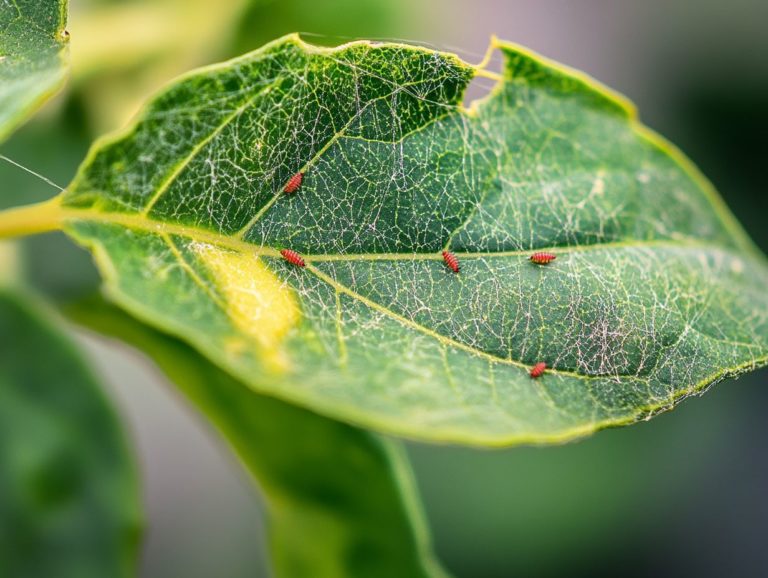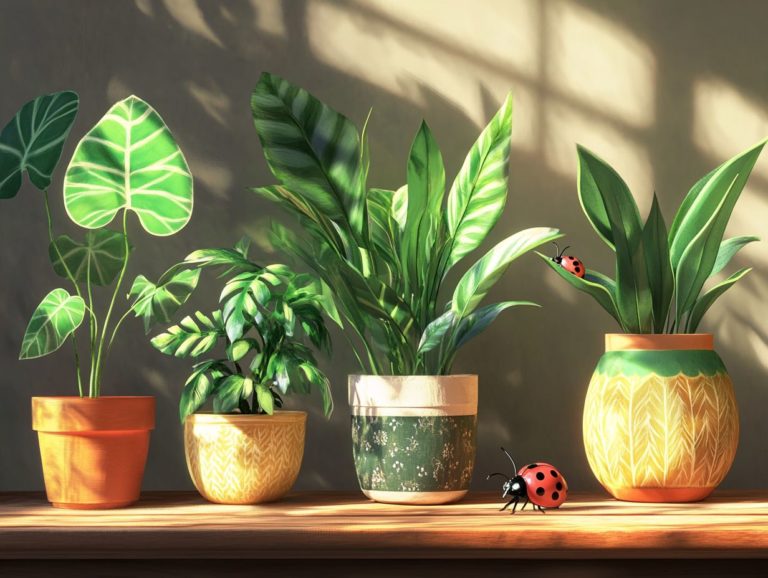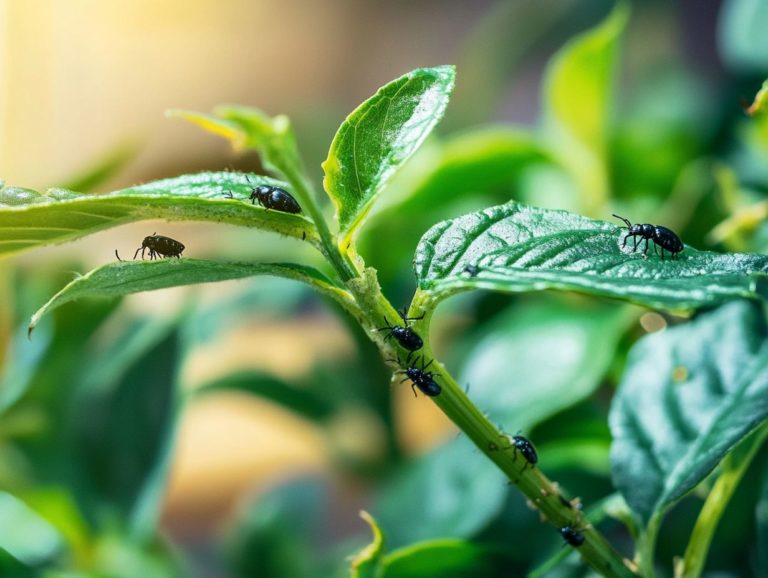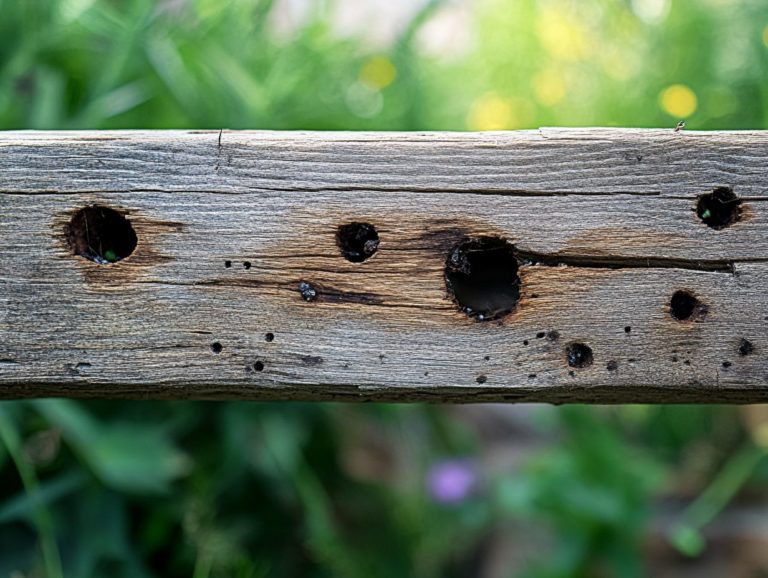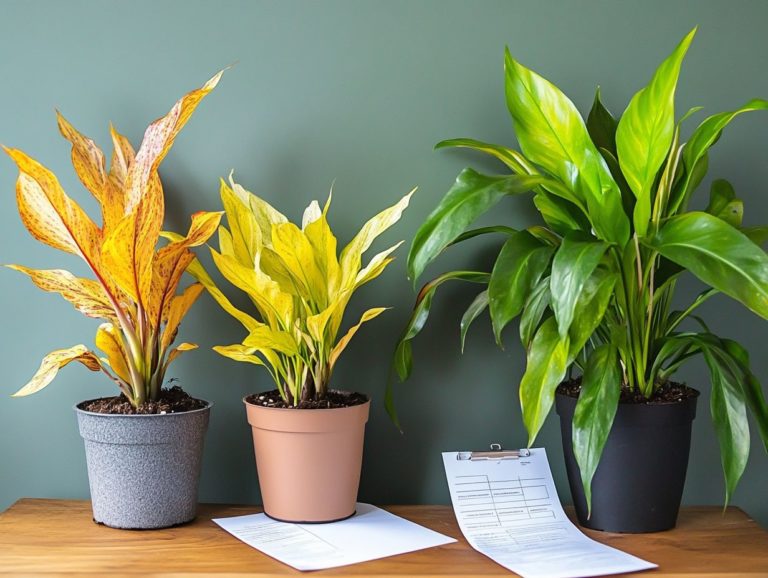Understanding the Impact of Humidity on Pests
Humidity significantly impacts the lives of pests, influencing their behavior, reproductive rates, and chances of survival under varying environmental conditions.
This article explains how pests, like insects and rodents, react to different humidity levels. You ll discover effective humidity control methods that can help prevent infestations and monitor humidity levels, as well as strategies for addressing existing pest issues tied to moisture.
You will also find tips for maintaining the right humidity levels and temperature, customized for various regions and seasons based on seasonal trends. When you understand this relationship, you can create a pest-resistant environment that enhances your living space and reduces pest activity.
Contents
Key Takeaways:
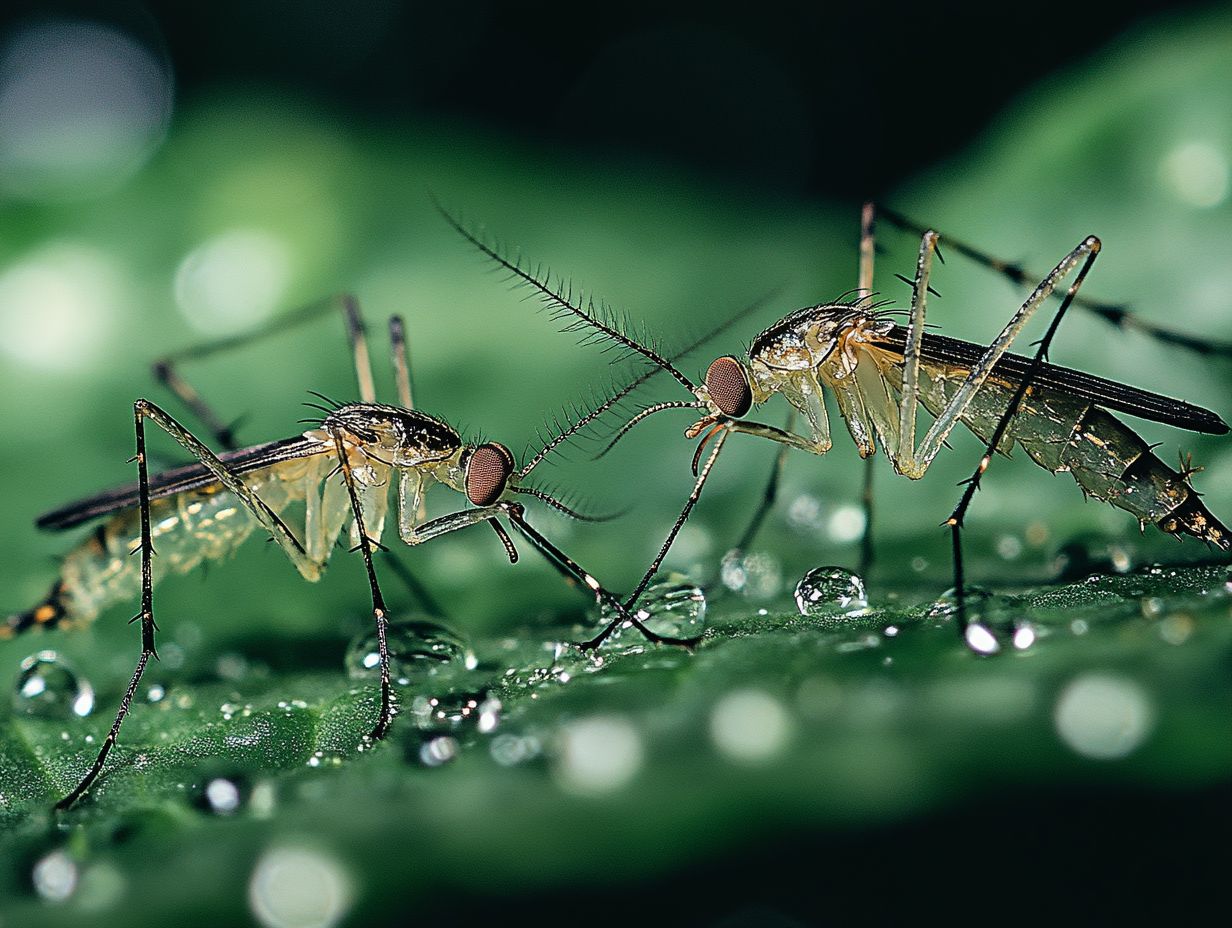
- High humidity can attract and accelerate pest infestations, as it creates a breeding ground for various insects, rodents, and termites, significantly impacting pest populations.
- Controlling humidity levels in homes and buildings can prevent and reduce pest infestations through effective pest control methods such as ventilation and dehumidifiers.
- Maintaining recommended humidity levels for your region and season can effectively deter pests and reduce the risk of pest-related diseases, protecting your property from costly damage.
Defining Humidity and its Effects on Pests
Humidity means the amount of moisture in the air, and it plays a crucial role in shaping pest behavior, pest populations, and ways to manage pests across various ecosystems. By grasping how humidity affects pests be it insects or rodents and understanding the ecological impact, you can implement effective pest control tactics.
Elevated moisture levels can create ideal breeding grounds, leading to soaring reproductive rates and infestations, particularly in warm weather and during specific weather patterns. Hence, keeping an eye on humidity levels in your indoor habitats and outdoor environments is vital for preventing pest-related diseases and maintaining ecological balance through long-term strategies.
For example, high humidity significantly boosts mosquito survival rates, as these pests thrive in moist conditions. This leads to larger populations and increased pest activity levels, heightening the risk of transmitting diseases like West Nile virus or Zika. Additionally, specific types of mold and mildew can flourish in humid conditions, attracting pests like ants and cockroaches that are on the hunt for food sources.
When humidity levels spike, it can also alter the behavioral patterns of rodents and insects, prompting them to invade homes in search of drier conditions. These behaviors highlight the necessity of understanding humidity metrics and weather data, which can guide you in implementing preventive measures and targeted pest control interventions, ultimately enhancing your pest control efforts.
How Humidity Affects Different Types of Pests
Humidity plays a pivotal role in influencing a range of pests, from insects to rodents and termites, by altering their behaviors, activity levels, and reproductive rates.
For example, when humidity rises, you may find an uptick in infestations of roaches, ants, mosquitoes, and spiders. This makes it essential for you to implement effective pest control strategies and pest management practices, particularly during certain weather patterns that favor pest activity.
Insects
Insects tend to be more active and reproduce at alarming rates in humid conditions, making them particularly susceptible to infestations in both indoor habitats and outdoor spaces.
Take cockroaches, for instance. They flourish in high-humidity environments, which can speed up their breeding cycles and lead to larger populations that become increasingly difficult to manage. Mosquitoes are no different; they see dampness as the perfect opportunity to lay their eggs, resulting in rapid surges in their numbers during rainy seasons.
As these pests multiply, it becomes essential for you whether a homeowner or a business owner to prioritize regular pest inspections and implement effective control solutions. This proactive strategy not only helps keep infestations at bay but also reduces the health risks these insects pose, contributing to a safer living environment for you and those around you.
Rodents

Rodents flourish in humid environments, where high moisture levels can amplify their populations and escalate pest activity, particularly in urban settings and transitional weather.
The excess moisture creates a prime habitat for these pests, enhancing their nesting materials and providing easier access to food sources. These sources become more plentiful in such climates, especially during certain weather-responsive methods.
Humidity influences rodent behavior significantly, making them more active and resourceful in their quest for sustenance. They often seek grains and fruits in gardens, basements, and other accessible indoor habitats.
To tackle infestations effectively, a combination of proactive measures and pest control strategies is crucial. Maintaining dry environments, sealing entry points, and implementing effective pest control measures like traps and baiting are essential steps. Regular inspections are key to spotting signs of rodent activity early, enabling homeowners and property managers to take swift action before a minor issue spirals into a full-blown infestation.
Termites
Termites are particularly sensitive to humidity and temperature. When moisture levels rise, they find ideal conditions for survival and reproduction, leading to potential infestations. This poses a serious threat to homeowners and businesses alike!
In areas with high humidity, these colonies can flourish, affecting their foraging behavior and increasing the chances of them seeking out wooden structures for nourishment. When moisture levels spike, termites tend to become more active, potentially leading to substantial infestations that often go unnoticed until significant damage has occurred, necessitating immediate pest control solutions. Recognizing this relationship is essential for effective pest management and environmental stewardship.
Employing strategies such as regular inspections, moisture control measures, and enlisting the help of pest control professionals can give you peace of mind. These professionals not only evaluate potential risk factors but also provide tailored preventive techniques suited to the conditions that attract termites and other pests.
Preventing Pest Infestations with Humidity Control
Implementing effective humidity control measures is crucial for preventing pest infestations in your home or business, significantly lowering the reproductive rates and pest activity levels of various pests.
By actively monitoring humidity levels and temperature, and taking proactive steps, you can create an environment that s far less inviting for unwelcome guests like insects and rodents.
Effective Humidity Control Methods
Effective humidity control methods, including dehumidifiers, ventilation systems, and moisture barriers, are essential tools in your pest control arsenal. They significantly reduce the likelihood of infestations and pest control interventions.
By maintaining optimal moisture levels, these techniques not only deter unwanted guests like termites, rodents, and mold but also create an environment that is less favorable for the spread of pest-related diseases.
Incorporating humidity monitoring into your pest management strategy allows you to detect fluctuations that could signal an impending infestation. This enables timely action and proactive measures. For example, placing moisture sensors in vulnerable areas such as basements and kitchens provides you with real-time data, guiding your decisions on ventilation adjustments or dehumidification efforts to minimize pest activity.
Ultimately, adopting a proactive approach to humidity management not only enhances your overall pest control practices but also ensures the health and safety of your living spaces. For better results, it’s crucial to understand the importance of humidity and reduces the ecological impact.
Dealing with Existing Pest Infestations Caused by Humidity
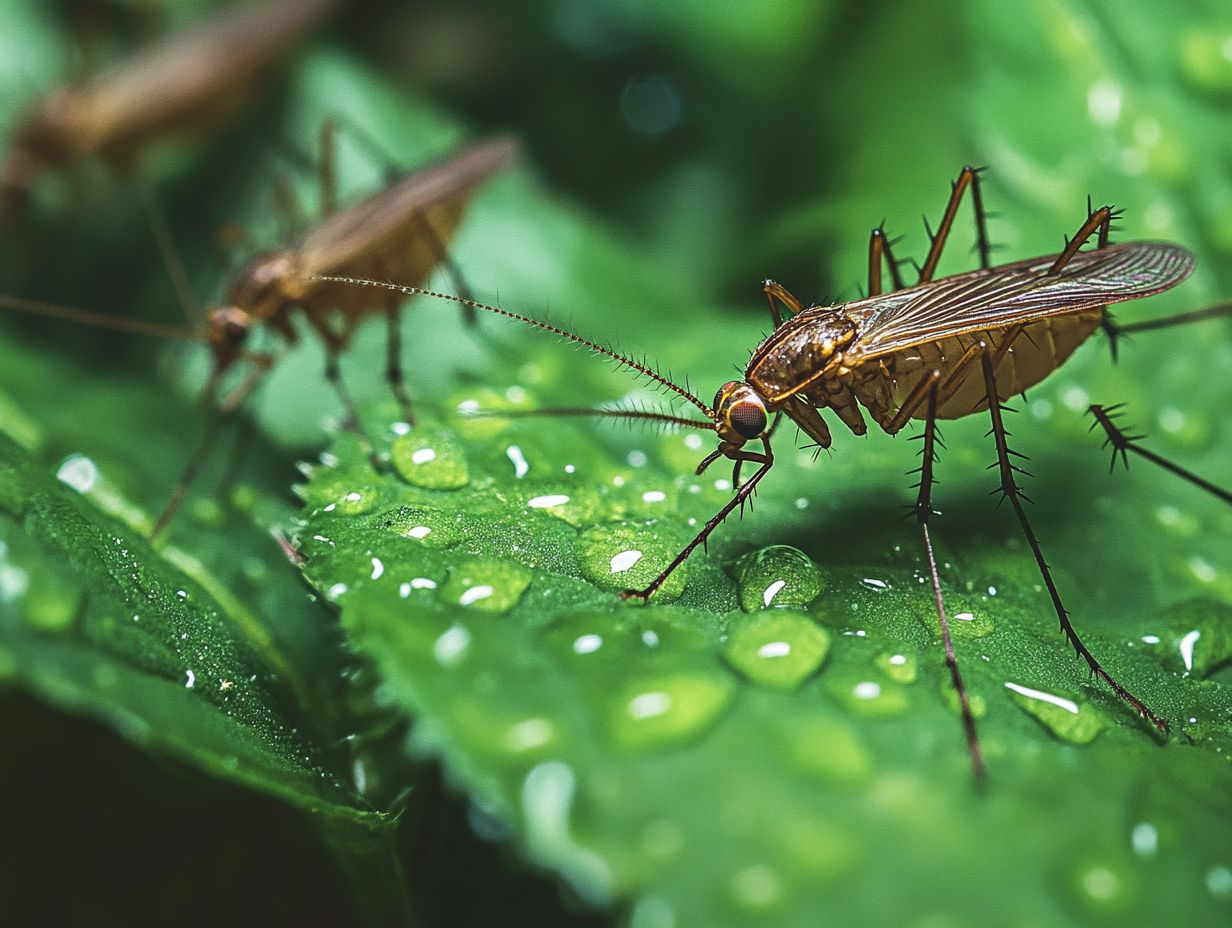
Addressing existing pest infestations quickly is crucial to prevent further damage. This demands a comprehensive strategy that includes effective pest control treatments. This involves conducting meticulous pest inspections, implementing targeted pest control treatments, and applying remediation techniques to tackle the underlying sources of moisture that attract pests.
Remediation and Prevention Strategies
Remediation and prevention strategies for humidity-related pest infestations require a thoughtful blend of professional pest control treatments and environmental modifications aimed at reducing moisture levels and pest activity.
To effectively address these persistent challenges, consider hiring pest control professionals. They use targeted insecticide treatments and pest control technologies, focusing on areas where pests breed and thrive. They may also suggest using more eco-friendly methods, like installing dehumidifiers devices that reduce moisture in the air or enhancing ventilation to combat high humidity.
Environmental changes are vital; sealing cracks and gaps in your structures can dramatically limit pest entry points. This helps curb moisture accumulation and enhances pest control effectiveness. Making landscaping adjustments, like ensuring proper drainage, can help direct water away from your foundations, further reducing pest activity.
By taking these proactive measures, you tackle current infestations and foster an environment much less welcoming to pests in the future, minimizing their ecological impact.
How to Maintain Humidity Levels to Keep Pests Away
Maintaining optimal humidity levels and temperature is essential for effective pest control. It directly influences pest activity and greatly diminishes the chances of infestations in both indoor and outdoor environments.
By managing humidity effectively and using weather data, you create an uninviting atmosphere for pests, significantly enhancing your defense against potential invasions.
Recommended Humidity Levels for Different Regions and Seasons
Recommended humidity levels differ across various regions and seasons, significantly impacting your pest control practices tailored to specific weather patterns.
In tropical climates, where high humidity is constant, pests like mosquitoes and termites can swiftly become a nuisance. It s crucial to adopt proactive measures throughout the year. On the flip side, if you live in arid regions, you may notice pest activity spiking after seasonal rains, which calls for reactive approaches to managing infestations.
As spring and summer roll in and temperatures rise, many pests emerge. This emphasizes the importance of humidity control. Homeowners and businesses should schedule pest inspections during peak humidity periods. Consider moisture management techniques, such as effective drainage and using dehumidifiers.
These steps will help you create an environment that s far less inviting to unwelcome pests.
Watch this video to learn more about managing humidity and pests.
Frequently Asked Questions
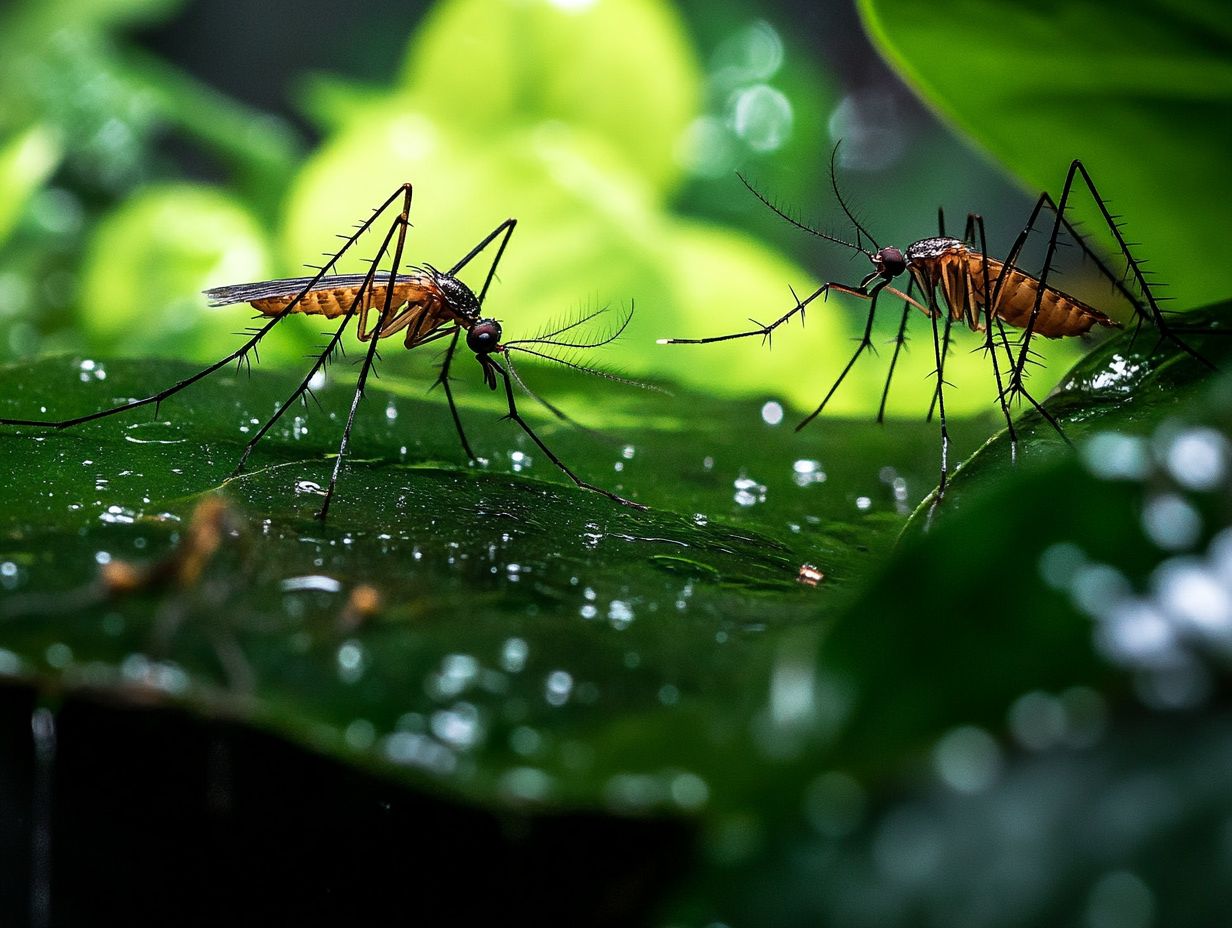
What is the relationship between humidity and pests?
Humidity plays a significant role in the survival and reproduction of pests. High humidity levels provide ideal conditions for pests to thrive and multiply, while low humidity levels can hinder their survival.
How does high humidity affect pest infestations?
High humidity creates a warm and moist environment that is perfect for pests such as cockroaches, termites, and mosquitoes. It can accelerate their growth and development, leading to larger and more severe infestations.
Which pests are most affected by humidity?
Pests such as cockroaches, termites, ants, bed bugs, and mosquitoes are highly sensitive to humidity levels. These pests require high moisture levels to survive and reproduce, making them more prevalent in humid areas.
How can low humidity affect pest control?
Low humidity can make it challenging to control pest infestations. Dry conditions can cause pests to die or become less active, making them harder to detect and manage. It can also reduce the effectiveness of certain pest control methods, such as insecticides.
What are the signs of high humidity in a home?
Signs of high humidity include increased pest activity, musty odors, mold growth, and condensation on windows and walls. Address humidity levels now to prevent infestations!
By understanding and managing humidity, you take the first step in protecting your home from pests!
How can I reduce humidity levels to prevent pest infestations?
You can reduce humidity levels by using a dehumidifier, which is a device that removes moisture from the air. Fix any leaks or water damage, improve ventilation, and keep your home clean and clutter-free.
Reducing humidity is crucial to stopping pests in their tracks! By taking these steps, you ll not only keep pests away but also create a healthier environment for you and your family.

